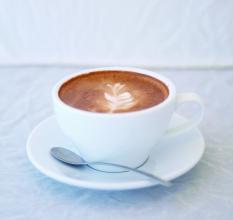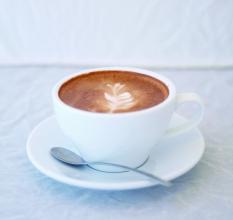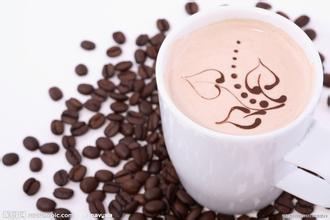The relationship between Kenyan coffee and Arabica coffee beans
Arabica coffee accounts for about 65 -80% of the world's coffee beans, and its excellent flavor and aroma make it the only coffee of these native species that can be drunk directly and alone. However, its resistance to drought, frost, diseases and insect pests is low, especially to the biggest natural enemy of coffee-leaf rust, so all producing countries are committed to improving varieties. For example, Sri Lanka, which is known as Sri Lanka, used to be one of the famous coffee producing countries, but at the end of the 19th century, coffee plantations were not spared because of leaf rust. Since then, Sri Lanka has turned to black tea, and India is also a black tea kingdom.
Arabica is a large shrub of the genus Arabica, having oval, dark green leaves and oval fruits, usually two slightly flattened beans, small, rounded, obverse, narrow, curved S-shaped cracks in the center, and a small, rounded, obtuse, obtuse.
Arabica coffee plants
Arabica coffee plants
The circular arc is smoother. Caffeine content is about 1%-1.7%.
Arabica coffee plants
Arabica coffee tree (5 photos)
feature editing
Arabica coffee trees grow at an altitude of 900 meters to 2000 meters; cold-resistant, suitable growth temperature is 15-24℃; larger humidity is required, annual rainfall is not less than 1500 ml, and at the same time, higher requirements are required for cultivation techniques and conditions.
Arabica coffee beans are mainly grown in South America (except Argentina and parts of Brazil), Central American countries, Africa (Kenya, Ethiopia and other places, mainly East Africa), Asia (including Yemen, India and parts of Papua New Guinea), Yunnan, Hainan and Taiwan in China. A small amount of Arabica coffee beans are also grown in Yunnan, Hainan and Taiwan

Important Notice :
前街咖啡 FrontStreet Coffee has moved to new addredd:
FrontStreet Coffee Address: 315,Donghua East Road,GuangZhou
Tel:020 38364473
- Prev

Indonesian Coffee Bean Processing
Kalossi coffee beans are mostly washed beans. The texture of this bean is thick, but the fruit acidity is also high, and it contains wild mushrooms and similar herbal flavors. Not many people like it. Most of them are sold to the United States and Japan. Another famous coffee in Sierbes is aged coffee beans, but they are very expensive and need to be stored in warm and humid climates.
- Next

Latte mocha, Hawaiian Kona, it's delicious.
Cappuccino: also known as Milk Coffee, steamed espresso with foamed milk, sometimes with cinnamon, spices and chocolate powder. Usually coffee, milk and milk foam each account for 1 stroke 3 * latte (Caff latte): steam pressurized espresso with the same amount of hot milk * seasoned coffee (flavored-coffee)
Related
- Does Rose Summer choose Blue, Green or Red? Detailed explanation of Rose Summer Coffee plots and Classification in Panamanian Jade Manor
- What is the difference between the origin, producing area, processing plant, cooperative and manor of coffee beans?
- How fine does the espresso powder fit? how to grind the espresso?
- Sca coffee roasting degree color card coffee roasting degree 8 roasting color values what do you mean?
- The practice of lattes: how to make lattes at home
- Introduction to Indonesian Fine Coffee beans-- Java Coffee producing area of Indonesian Arabica Coffee
- How much will the flavor of light and medium roasted rose summer be expressed? What baking level is rose summer suitable for?
- Introduction to the characteristics of washing, sun-drying or wet-planing coffee commonly used in Mantenin, Indonesia
- Price characteristics of Arabica Coffee Bean Starbucks introduction to Manning Coffee Bean Taste producing area Variety Manor
- What is the authentic Yega flavor? What are the flavor characteristics of the really excellent Yejasuffi coffee beans?

